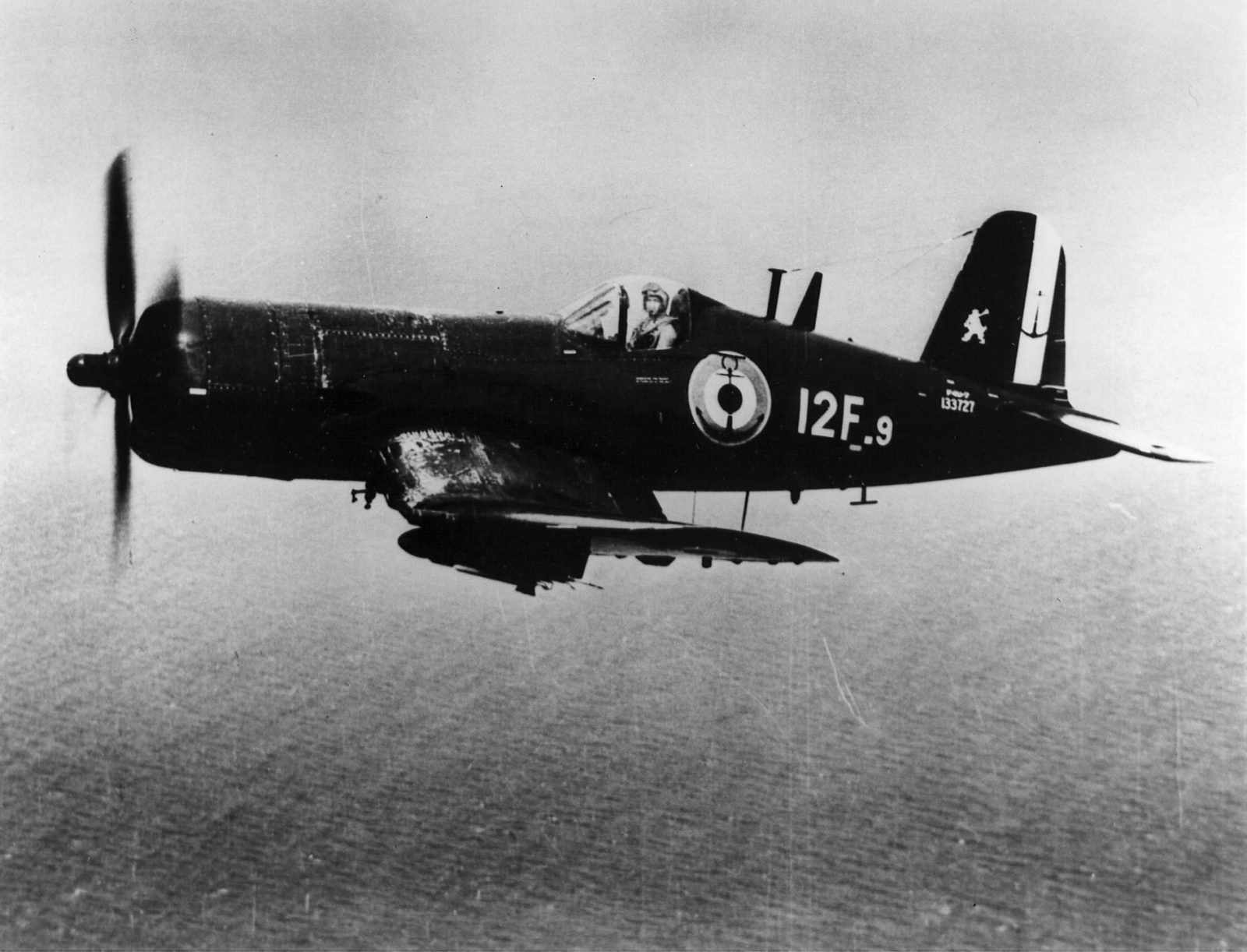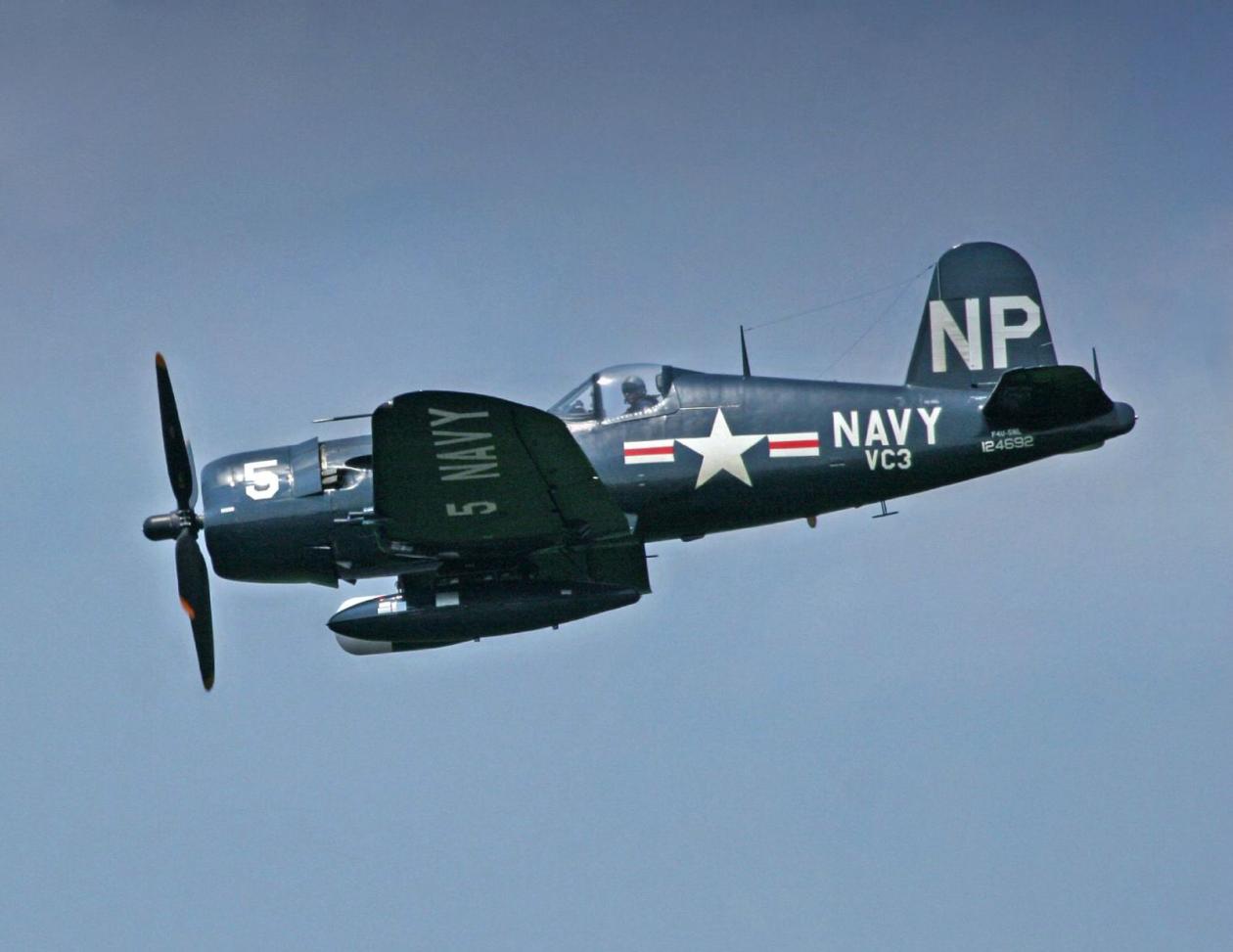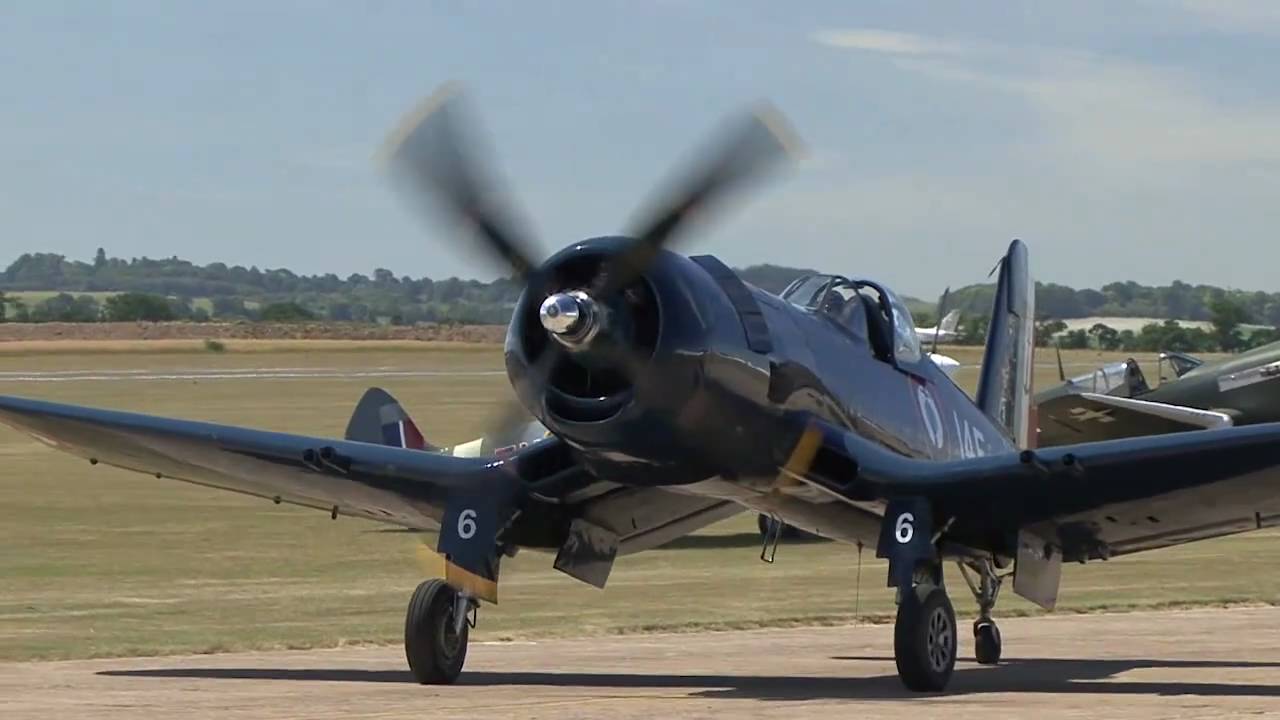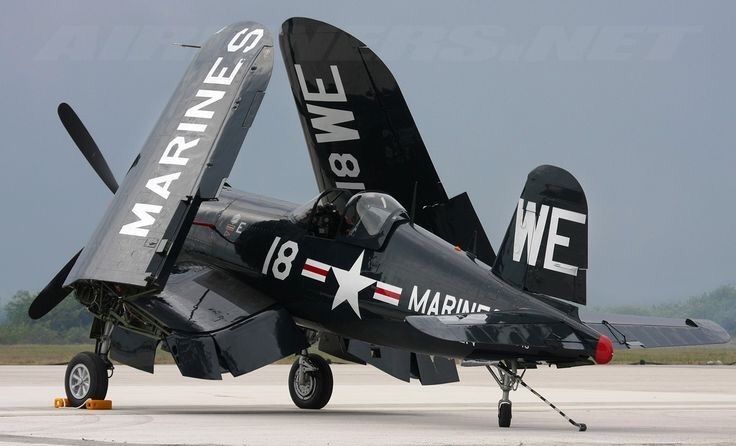The aircraft for today is one of the renowned fighter aircraft from the early years of World War II that served the United States Navy. The name of this aircraft is Vought F4U Corsair which was the fighting equal to that of the Japanese Mitsubishi A6M Zero fighter aircraft. The aircraft saw considerable service with the United States Navy both during World War II as well as during the Korean War.

The Vought F4U Corsair was designed and ten manufactured by the aircraft company named Chance Vought. The Vought F4U Corsair was designed to be a carrier-based aircraft that entered the service of the US Navy in large numbers back in 1944 and very soon it acquired its place as one of World War II’s most capable carrier-based fighter bomber aircraft.

As per many of the Japanese pilots, they considered the Vought F4U Corsair to be a formidable competitor with its kill ratio being 11:1. Due to the problems in its logistics and the landings on aircraft carriers, the early days of the Vought F4U Corsair were eclipsed by another carrier-based aircraft Grumman F6F Hellcat. In fact, these problems led to the Vought F4U Corsair to be used as a land-based aircraft manned by pilots of both the US Navy and the US Marine Corps.

Nearly 12500 of these Vought F4U Corsair fighter bomber aircraft were manufactured that served the US as well as by New Zealand and France. The aircraft was retired by the US Navy back in 1953 while its last operator retired the aircraft back in 1979.
Origin:-

The origin of the Vought F4U Corsair comes from the US Navy’s requirement put forth back in 1938 for a high-performance fighter that could be operated from aircraft carriers. The call for US Navy was answered by Chance Vought; an aircraft manufacturing company with its design named Model V-166. Engineers at Vought tried there hardest to fit the compact design of the Model V-166 with the state of the art engine at that time, which was the Pratt & Whitney XR-2800 Double Wasp radial piston engine. This engine would then power a large 3-blade propeller. In other innovations, the aircraft had the inverted gull-wing mainplane to prevent its spinning propeller blades from colliding with the ground and to also force the usage of the landing gear legs.
First Flight:-

Vought went on to produce 2 prototypes of the Vought F4U Corsair which were designated as V-166A and V-166B each fitted with different kinds of Pratt & Whitney engines. The favor of the US Navy was in direction of the B model and they told Vought to manufacture a submission aircraft that would later be designated as XF4U-1.

The aircraft had its first flight recorded back on 29th May 1940 and the aircraft broke the speed limit of 400 mph which was the fastest for any American fighter of that era. Few changes were made in the design of this approved Vought F4U Corsair prototype to accommodate a new armament scheme and the series production was started back in 1941. The first contract was for manufacturing of nearly 584 of these Vought F4U Corsair aircraft for the US Navy but the production line was delayed until 25th June 1942 and the aircraft entered the service of US navy back on 25th December of that very same year.
An equal of Japanese Mitsubishi A6M Zero:-

The aircraft ran into problems related to its lading on the aircraft carriers due to its large size and was thus deployed as the land-based aircraft for the US Navy and the US Marine Corps. These Vought F4U Corsairs proved to be a capable adversary for the Japanese Mitsubishi A6M Zeroes which were the pride fighter aircraft of the Japanese Imperial Navy. These Zeroes were poorly protected due to having lacking armor protection as well as self-sealing tanks while the Vought F4U Corsair was made to be worthy of the war efforts. With US Navy and US Marine Corps maintaining a stock of seasoned as well as newly trained pilots and these Vought F4U Corsairs, the tide of war in the Pacific Theater was quickly overturned.
Nicknames:-

In fact, the Japanese Army got so accustomed to the whistling high pitched sounds of the Vought F4U Corsair aircraft that they even nickname the aircraft as “Whistling Death”. This sound came from the Vought F4U Corsair when it performed a high-speed dive during the attack and caused the air to rush out from the cooler vent at high speeds.
The aircraft was also given other nicknames from its operators like the Ensign Killer and the Ensign Eliminator all because of the fact that it was tricky to handle the Vought F4U Corsair when it was on the aircraft carrier’s deck.
Amazing Kill Ratio in World War II:-

By the end of the year 1943, the pilots of Vought F4U Corsair aircraft had already managed to have 500 confirmed kills and by the end of World War II back in August 1945, they had already downed 2140 confirmed enemy aircraft. The highest scoring ace of the US Marine Corps named Major Gregory Pappy Boyington who on his Vought F4U Corsair had 28 confirmed enemy kills. All of these kills were made in nearly 64000 sorties carried out by pilots of Vought F4U Corsair during the entire course of the war.
Against the Japanese enemies, the entire Allied Forces managed to earn a kill ratio of about 11:1 on the Vought F4U Corsairs.
Powerplant:-

Powered by a single Pratt & Whitney R-2800-18W radial piston engine, the Vought F4U Corsair could maintain a top speed of about 446 mph. the ferry range of the aircraft was about 1005 miles while flying at a maximum altitude of about 42000 feet.
Armaments:-

The Vought F4U Corsair had the standard armament configuration of 6 M2 12.7mm Browning heavy machine guns; 3 of each fitted on its wings. In the variant model F4U-1C, these machine guns were replaced with 4 of the M2 20mm autocannons.
The aircraft also had the ability to carry nearly 4000 lbs of external ordnance for mission-specific needs. These external loads were often the conventional drop bombs and aerial rockets.
Made debut in 70s TV Sow:-

In the pop-culture appearance, the Vought F4U Corsair was also the main subject for a 1970s TV show titled “Black Sheep Squadron”. This show was about the chronicles of the US Marine Corps Ace Pilot Pappy Boyington and his achievements during the Pacific Theater of World War II.
Related Content
Grumman AF Guardian: Carrierborne ASW (Anti-Submarine Warfare) Aircraft





